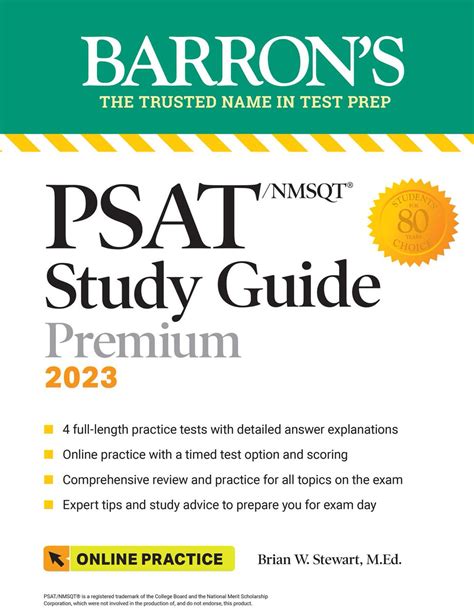Introduction

The Preliminary SAT (PSAT) is a standardized test administered by the College Board that provides high school students with an early assessment of their college readiness. The PSAT, previously known as the PSAT/NMSQT, is taken by millions of students each year and serves as a qualifier for the National Merit Scholarship Program.
Key Dates
- PSAT 8/9: October 11 and 12, 2023
- PSAT 10: October 18 and 19, 2023
- PSAT/NMSQT: October 25 and 26, 2023
Registration
Students can register for the PSAT through their school counselors or online at the College Board website. The registration deadline for all PSAT tests is September 15, 2023.
Test Format
The PSAT consists of three sections:
- Reading: 47 questions, 60 minutes
- Writing and Language: 44 questions, 35 minutes
- Math: 48 questions (24 non-calculator, 24 calculator), 70 minutes
Scoring
The PSAT is scored on a scale of 320 to 1520. Each section is scored separately, with a maximum score of 760.
Percentile Rankings
The College Board provides percentile rankings for each PSAT section based on the performance of all test takers. Percentile rankings show how a student’s score compares to other students who took the test.
National Merit Scholarship Program
The PSAT/NMSQT is the qualifying exam for the National Merit Scholarship Program. Students who score in the top 1% of their state on the PSAT/NMSQT are eligible to become National Merit Semifinalists. Semifinalists who maintain high academic standards and earn high SAT or ACT scores can become National Merit Finalists and receive scholarship awards.
Preparing for the PSAT
Students can prepare for the PSAT by studying the official College Board study guide, taking practice tests, and working with a tutor. The College Board also offers free online resources and interactive practice questions.
Using PSAT Results
PSAT results can help students identify areas for improvement, set college and career goals, and make informed decisions about their education. Students can use their PSAT scores to:
- Compare their performance to national norms
- Identify strengths and weaknesses
- Track their progress over time
- Prepare for the SAT or ACT
- Qualify for scholarships
Frequently Asked Questions
Q: What is the difference between the PSAT 8/9, PSAT 10, and PSAT/NMSQT?
A: The PSAT 8/9 is designed for students in grades 8 and 9, the PSAT 10 is for students in grade 10, and the PSAT/NMSQT is for students in grades 11 and 12 who wish to qualify for the National Merit Scholarship Program.
Q: How can I improve my PSAT score?
A: Practice taking the test using official College Board materials, work with a tutor, and focus on improving your skills in reading, writing, and math.
Q: What are the benefits of taking the PSAT?
A: The PSAT provides valuable feedback on your academic progress, helps you identify areas for improvement, and can qualify you for scholarships.
Q: Is the PSAT the same as the SAT?
A: No, the PSAT is a shorter and less difficult version of the SAT. The PSAT is designed to help students prepare for the SAT.
Q: How can I register for the PSAT?
A: You can register for the PSAT through your school counselor or online at the College Board website.
Q: What is a good PSAT score?
A: A good PSAT score depends on your grade level and aspirations. Generally, a score above the 50th percentile is considered good.
Conclusion
The PSAT is an important standardized test that can help high school students assess their college readiness and set educational goals. By understanding the test format, preparing adequately, and using their results effectively, students can maximize their performance on the PSAT and improve their chances of success in college and beyond.
